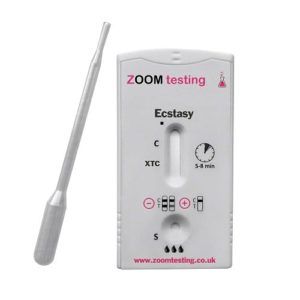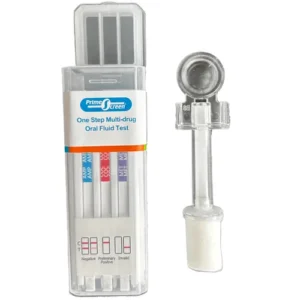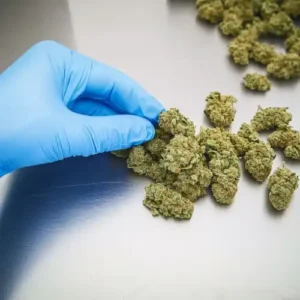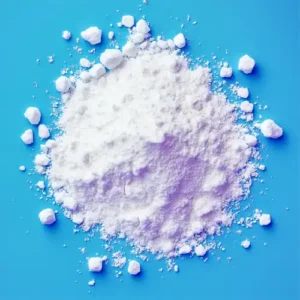Ecstasy is back. The popular clubbing drug of the 80’s and 90’s is now seen by many young people as the “drug of the moment.”
Use of the drug is still highly controversial. Pure MDMA has been shown to have potential therapeutic benefits, especially among people with depression, PTSD, and similar behavioural issues. Recent trials of the drug have shown benefits in preventing alcoholism.
However concern still exists about the safety of the drug. Ecstasy users are often unsure about what exactly they are buying. Pill testing is not common in the UK and many people still swallow unknown pills, putting their lives in danger. High-strength MDMA pills, potentially containing 250 to 300mg of MDMA, have also been linked to recent drug deaths.
Despite the risk, use of the drug remains steady in the UK and worldwide and drug testing for MDMA remains increasingly important.
Understanding MDMA or Ecstasy
The common name for the drug MDMA is Ecstasy which is a controlled substance. The person that takes this drug has feelings of affection and happiness when on the drug so this is how it gets the name ecstasy. This drug lowers a person’s inhibitions, improves self-confidence, raises the sex drive, and makes a person feel good overall. The MDMA drug has undergone tests for therapeutic and clinical capabilities but the drug is said to be a risk to the nervous system so using it in these medical areas is under scrutiny.
The ecstasy drug is very popular at “rave” parties where there’s a lot of people dancing to music. Law enforcement tends to target these parties to bust those selling the MDMA drug there. If someone overdoses on this drug there can be hyperactivity, hallucination, anxiety and the person could have a stroke or heart attack leading to death. In people that use this drug excessive there have been reports of brain damage.
How long does MDMA Stay in Your System?
To figure out how long the drug has been in a person’s system there’s a need to figure out if it was a multiple dose or a single dose of the drug. Many people use a multiple dose to maintain the high associated with the drug. If there’s a multiple dose then the MDMA will stay in the system for a longer period of time. If a person takes a multiple dose it’s not recommended that they take anymore of the drug as the side effects of coming down from the drug may be severe.
Single Dose of MDMA
A single dose of the drug gives the following results:
- In the urine: there are traces present from 1 to 3 days
- In the blood: there are traces present for ~12 hours
- In the saliva: there are traces present from 1 to 3 days
- In the hair: this will be found in laboratory tests from 90 days or later
Multiple Doses of MDMA – Two or More Doses
Multiples doses of the MDMA drug increase the time that MDMA will stay in your system:
- In the urine: there are traces present from 2 to 5 days
- In the blood: there are traces present for ~24 hours or more
- In the saliva: there are traces present from 1 to 5 days
- In the hair: this will be found in laboratory tests from 90 days later
Procedure to Conduct Test for MDMA
MDMA can be tested for by using regular drug testing methods. A blood sample or a saliva swab can be used. A urine sample can be taken if the person produces urine within a few hours of the suspected injection of MDMA. Saliva samples can typically detect MDMA use for 1-3 days after ingestion. Urine can even be tested for up to 24 hours after the drug was taken but a test during a shorter time period is recommended. If the drug is tested for right away this can produce a more accurate result. The person’s behaviour can also be an indication that the individual has used MDMA.
Urine Drug Testing for MDMA
A urine drug test is one of the most common ways to test for the presence of MDMA and other illicit drugs. For MDMA, urine testing is optimal if performed within 1-3 days of ingestion, as the drug and its metabolites quickly clear from urine.
The urine sample is collected in a sterile specimen cup. Adulteration can be detected through temperature and chemical checks. The sample then goes through an initial screen and confirmation if positive. The initial screen uses immunoassay to look for the MDMA metabolite MDA at a cutoff of 500 ng/mL. This immunoassay screen cross-reacts with amphetamines, so a positive needs confirmation.
Factors that may affect urine drug test results include:
– Hydration status – A dilute sample may lower concentrations below cutoffs
– Use of other drugs – Some drugs may lead to positive immunoassay screens
– Time since use – MDMA is only detectable for 1-3 days in urine
Urine drug testing has some advantages including:
– Established cutoffs and testing methods
– Long detection window of 1-3 days
– Difficult to adulterate compared to other samples
There are also disadvantages such as:
– Limited detection window of 1-3 days
– Need for baseline urinalysis and shy bladder protocols
– Potential cross-reactivity with amphetamines
Overall, urine drug screening is useful for detecting recent MDMA use. However, it has a short detection window and risk of screen cross-reactivity. Using an initial screen and GC/MS confirmation with proper cutoffs minimises the risks of false positives. Other sample types like hair may be preferred for long-term detection.
Urine Drug Tests From Zoom Testing
The following urine drug tests are all ideally suited for MDMA drug testing and are recommended choices from Zoom Testing, the UK drug testing experts. These tests are normally kept in stock, allowing us to send them out to you on the same day you order!
- Ecstasy Drug Test (MDMA)
- 10 Panel Drug Test with Integrated Cup
- 13 Panel Drug Test with Integrated Cup
- 18 Panel Drug Test with Integrated Cup
Saliva Drug Testing for MDMA
Saliva drug testing is another common method to detect recent use of MDMA. Saliva testing has some advantages over urine, including:
- Easier, non-invasive collection
- Detects recent use from past few hours to 2-3 days
- Less susceptible to adulteration
With saliva testing, the donor spits into a collection tube or swabs their mouth. The sample then goes through an immunoassay screen and GC/MS confirmation if positive.
Initial immunoassay screens test for the MDMA metabolite MDA, with a typical cutoff of 50 ng/mL. There can be some cross-reactivity with amphetamines. GC/MS confirmation looks for MDMA and MDA, with cutoffs of 10-25 ng/mL.
Factors that may impact saliva test results include:
- Detection window of 1-3 days, less than urine
- Hydration status
- Food, drink, smoking – may affect concentrations
- Use of other drugs – potential immunoassay cross-reactivity
Some advantages of saliva testing:
- Easy, non-invasive collection
- Detects very recent use up to 2-3 days
- Difficult to adulterate or substitute sample
- Tests for parent drug instead of metabolite
Disadvantages include:
- Short 1-3 day detection window
- Lower concentrations than urine
- Possible contamination of sample
Saliva testing is best for detecting very recent MDMA use from the past few hours up to 2-3 days. It is less invasive than urine collection. However, it has a shorter detection window than urine and lower concentrations.
Proper cutoffs and GC/MS confirmation minimise risks of false positives. But collection should be monitored to avoid contamination. Overall saliva testing provides a quick, convenient way to detect recent MDMA use.
Saliva Drug Tests From Zoom Testing
Zoom Testing, the leading UK drug testing kits supplier, recommends this oral fluid drug test for accurate and efficient MDMA detection.
Photo credit: “Pills” by Anthony Cunningham for Zoom Testing
Zoom Testing is a leading UK drug testing company and a supplier of Drug Test Kits.







